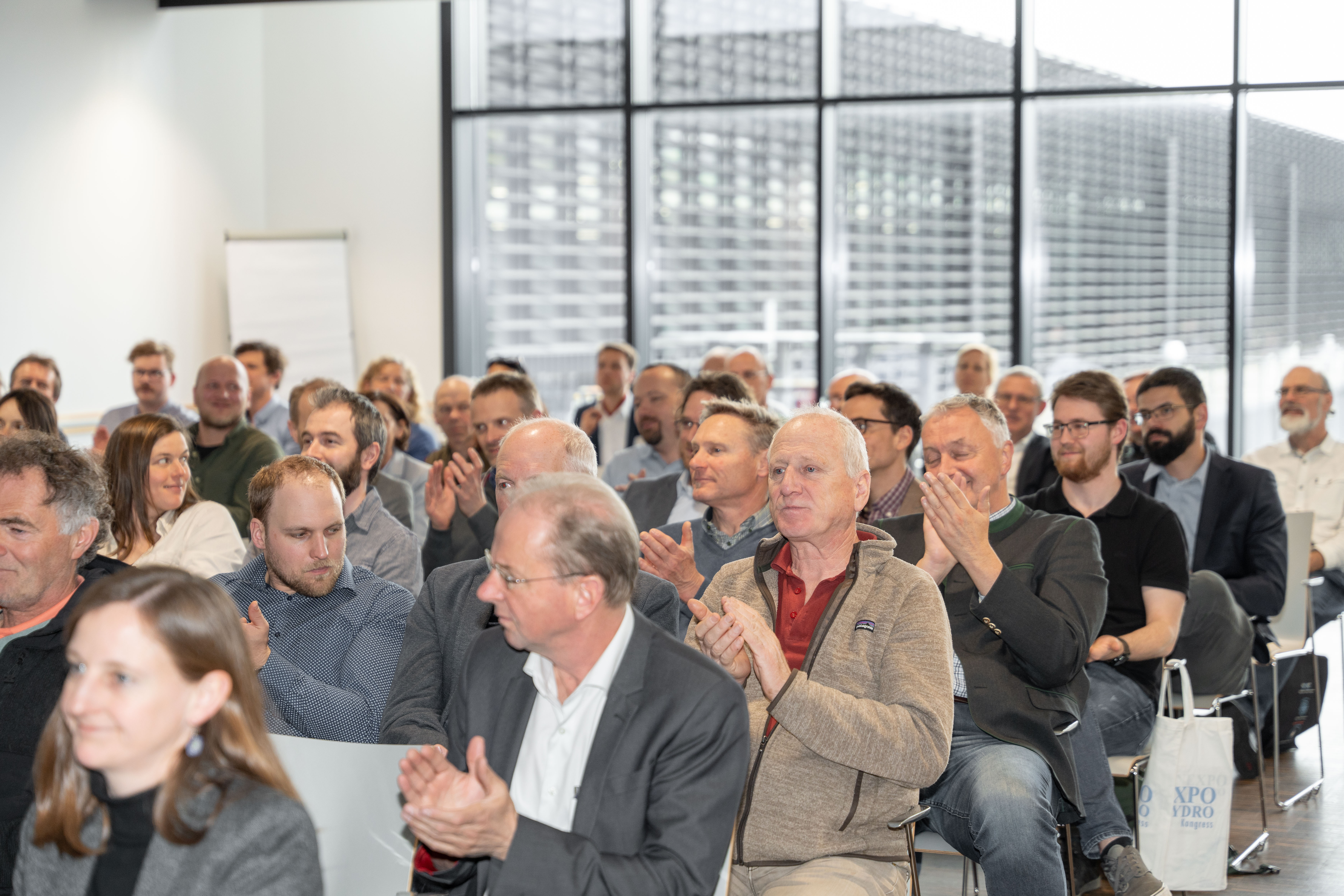
IIASA researchers present results from the WaterStressAT project at the Renexpo Interhydro Conference in Salzburg.
Renexpo Interhydro is an annual conference which invites operators of hydropower plants from across Austria and Bavaria to join the talks and presentations from practitioners, funders, policymakers and researchers.
Susanne Hanger-Kopp from the Equity and Justice Research Group (EQU) and Mikhail Smilovic from the Water Security Research Group (WAT) presented the results of the WaterStressAT project, introducing a Qualitative System Map (QSM) and the Community Water Model (CWatM). The QSM was developed to support the specification and adaptation of the open-source quantitative hydrological model CWatM and, where applicable, of a hydro-economic model (ECHO) to regional characteristics, considering regional hydrologic and climate futures.
The IIASA presentation is available here (in German)
After engaging with experts and stakeholders in the Pinzgau region, hydropower emerged as an important sector for the QSM, but also for the practical application of the CWatM tool. As CWatM was downscaled for the Pinzgau region, both CWatM and the QSM can support hydropower plant operators in their long-term planning while taking into account different systems implications, climate change scenarios by GeoSphere Austria (formerly ZAMG), and fluctuations in run-off. For this reason, both project outputs were presented at the conference and the audience was introduced to how CWatM works, what the underlying data are, as well as to the benefits of using the tool. The QSM can be understood as a guide to outline the implications of, for example, changes in run-off on hydropower, but also other sector elements.
The WaterStressAT project aims at modeling local and regional water availability and demand in Austria under various regional development and climate change scenarios in two Austrian regions, Pinzgau and Seewinkel. While Austria is a water-rich country, changes in demand as well as climate change create local and regional hot-spots of water stress. It is thus of key importance to understand the current status and future development of these phenomena in order to identify potential areas of tension and inform decision-making at all levels of governance. For this purpose, WaterStressAT established a comprehensive participatory modeling process. This process is designed around regular stakeholder engagement, where key actors regularly interact with an interdisciplinary team of researchers.
News

18 December 2024
Celebrating a year of impact: IIASA highlights in 2024

12 December 2024
Moose Browsing Damage in Swedish Forests

12 December 2024



